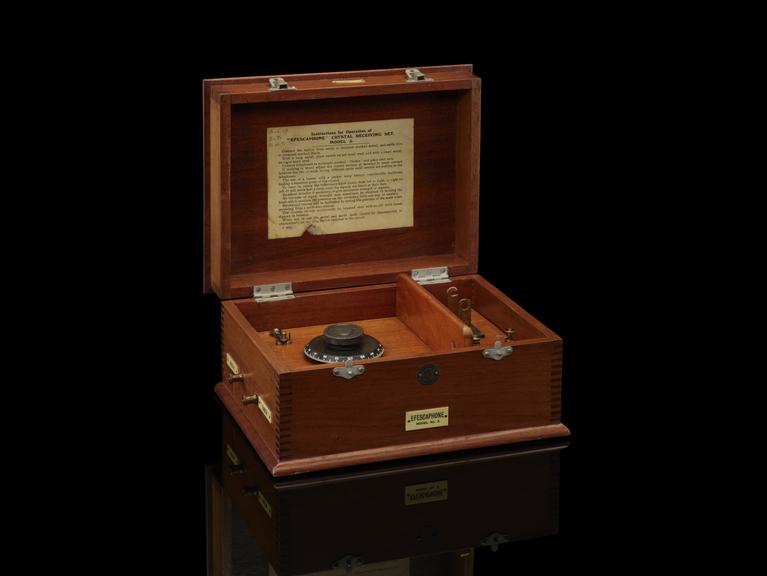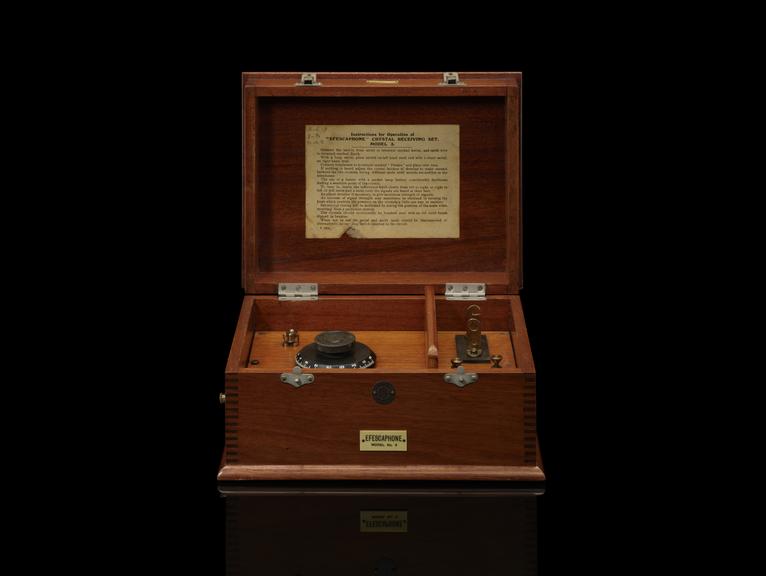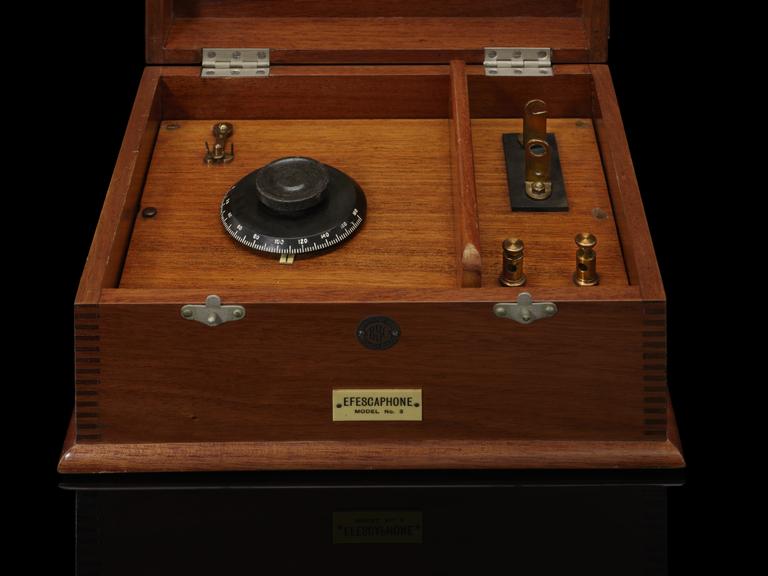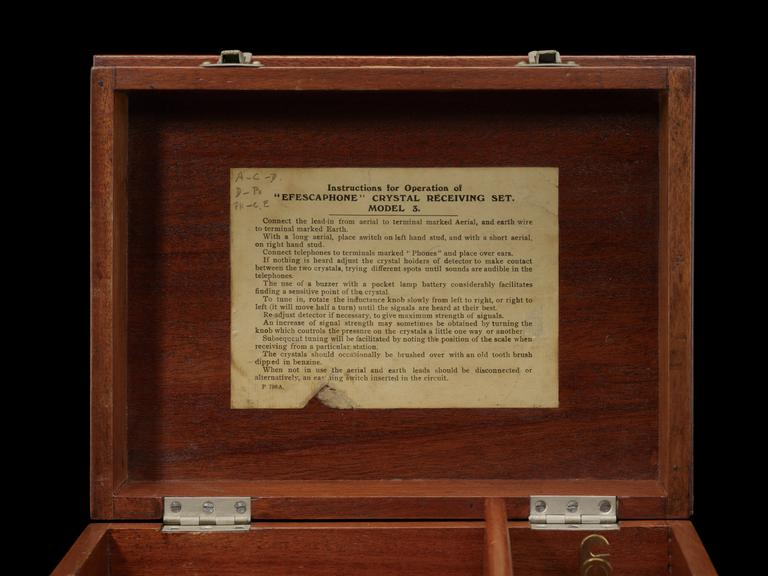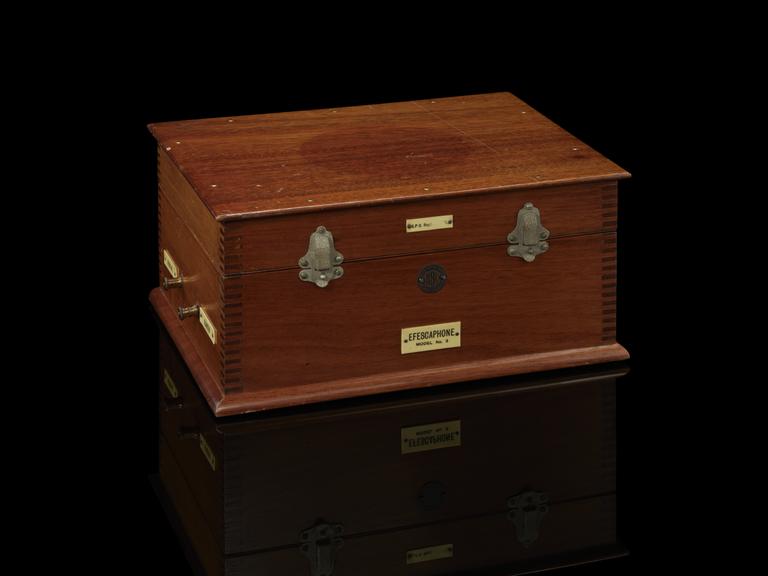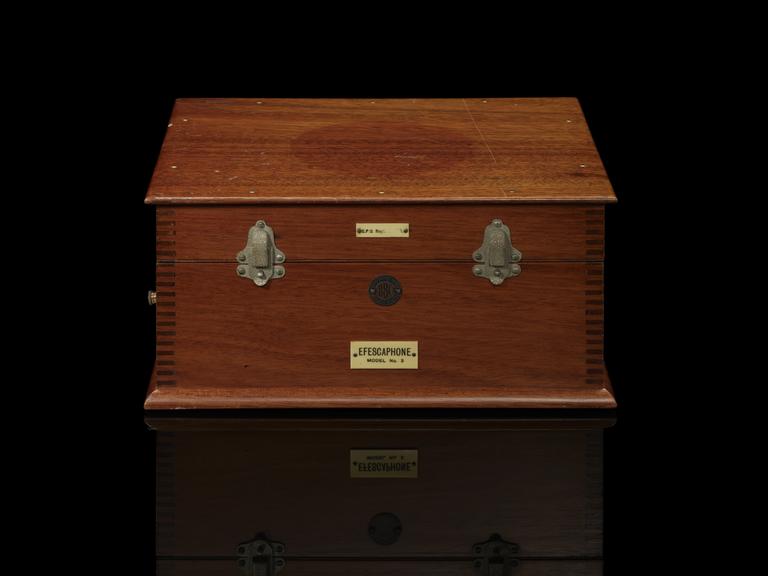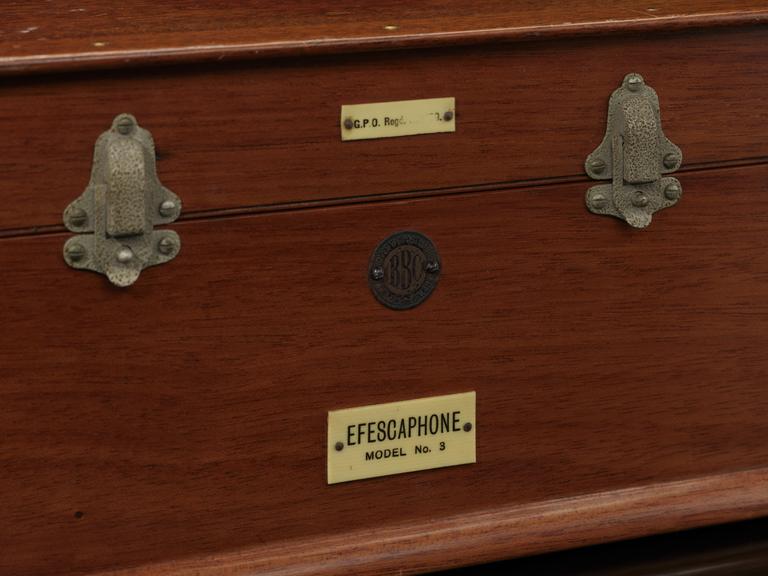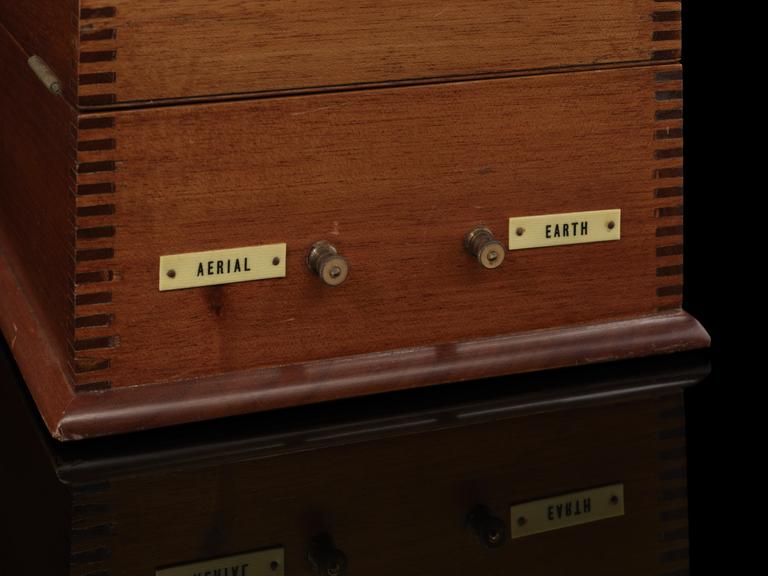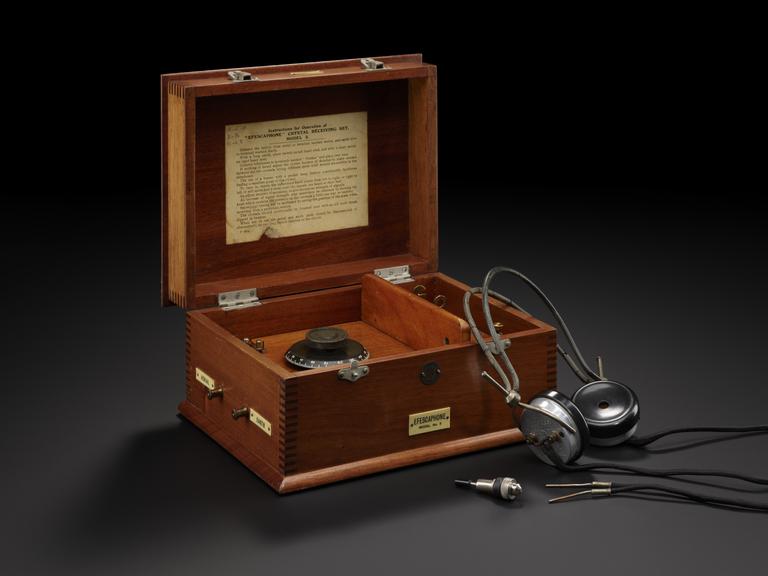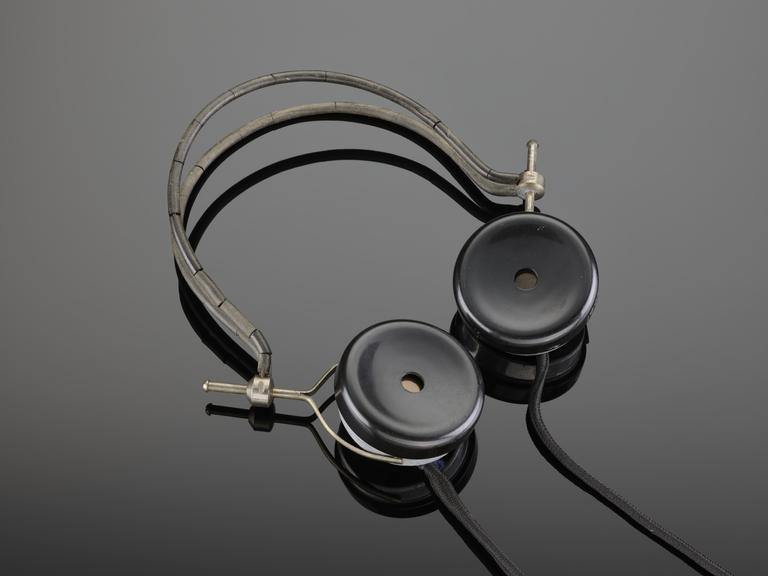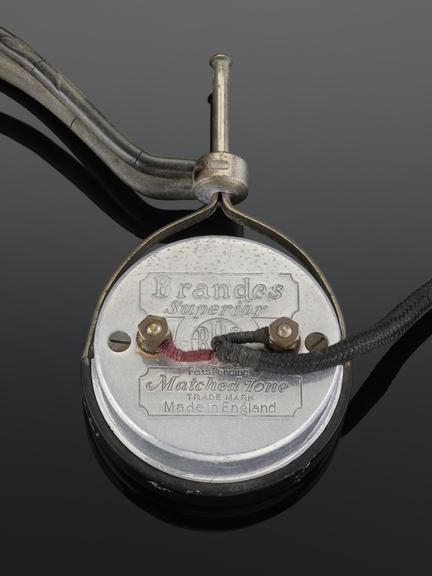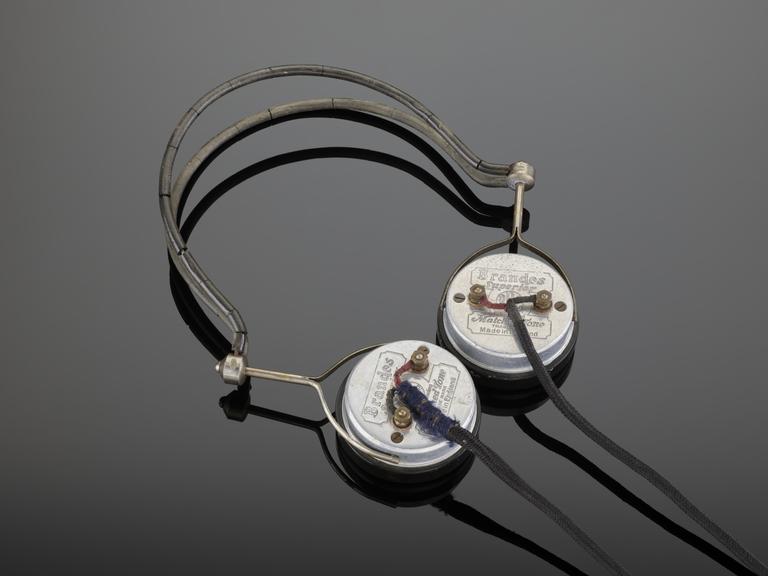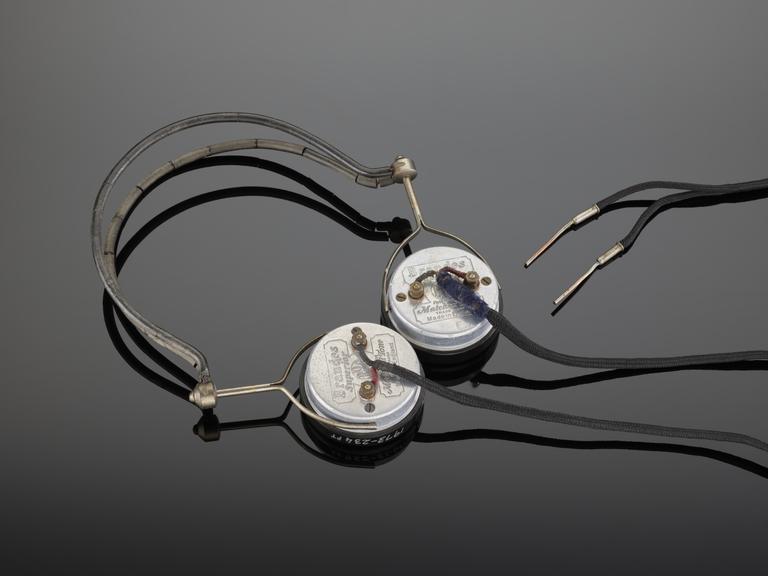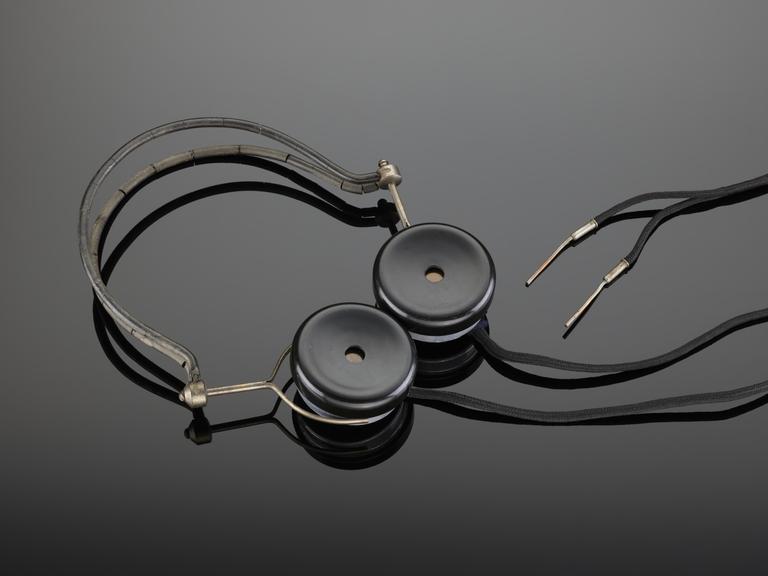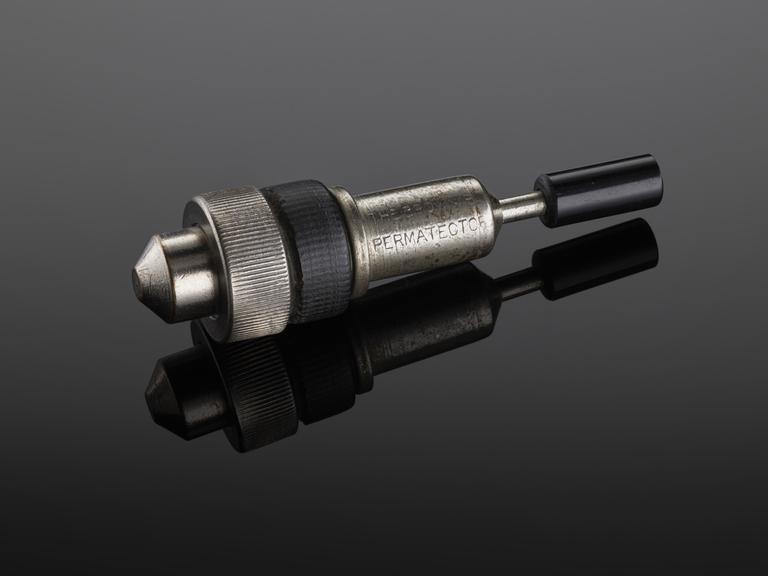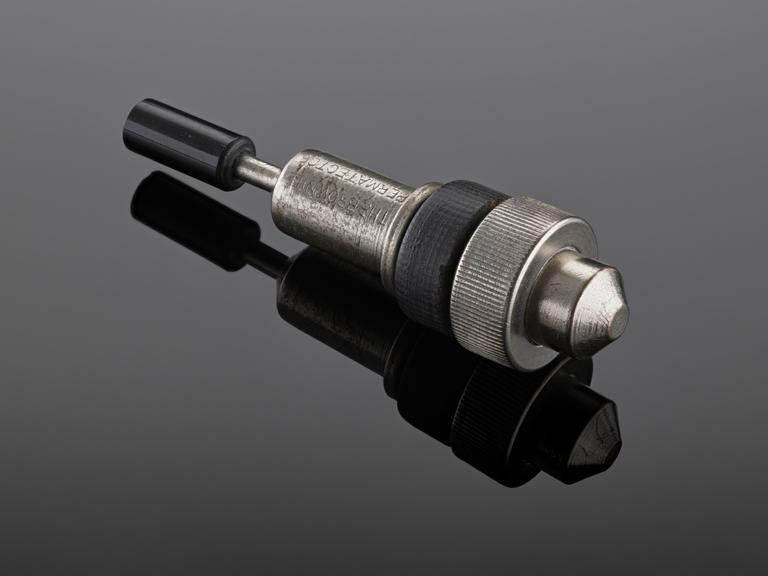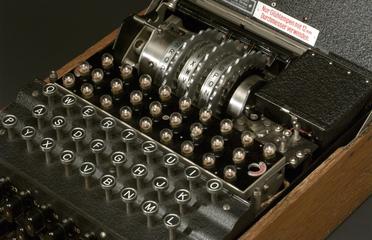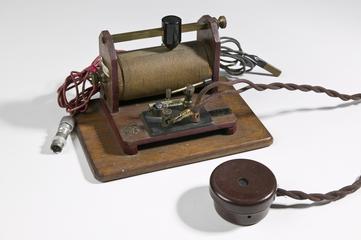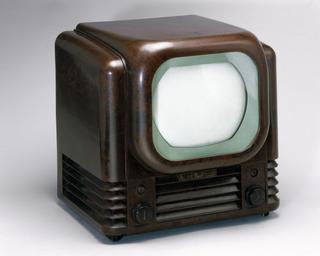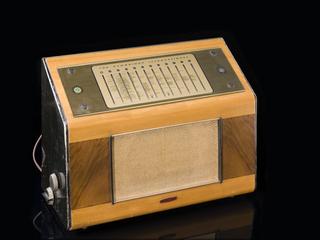Efescaphone Crystal Radio Set, c.1924
‘Efescaphone’ Crystal Radio set Model 3, England, c. 1924.
More
Crystal sets such as this were some of the first publicly available radios. They could be made at home or purchased ready built, like this example, which was more expensive. This model 3 ‘Efescaphone’ crystal radio set was made by English manufacturers Falk Stadelman and Company Limited established in 1904.
Crystal set radios employed a mineral crystal in delicate contact with a tiny coil of wire known as a 'cat-whisker' to detect broadcast signals. The cat-whisker had to be placed by the user in exactly the right position in contact with a fragment of crystalline galena.
Not needing batteries, crystal sets used the power in the radio waves themselves to generate sound through the headphones. The downside of this is that the further the radio is from a transmitter the weaker signal you receive and the less useful your radio will be. It also means you cannot increase the volume on the radio, and so need to wear headphones to listen in.
From the mid-1920s valve radios became available. These were much more powerful and could amplify the signal they received. This meant they could pick up a signal from further away and could be played out-loud. Crystal radios could not compete, and soon became a relic of the past.
- Materials:
- mahogany (wood) , plastic (unidentified) , white metal (unknown) , brass (copper, zinc alloy) and steel (metal)
- Object Number:
- 1973-234/1
- type:
- broadcast receivers and crystal sets
- Image ©
- The Board of Trustees of the Science Museum

